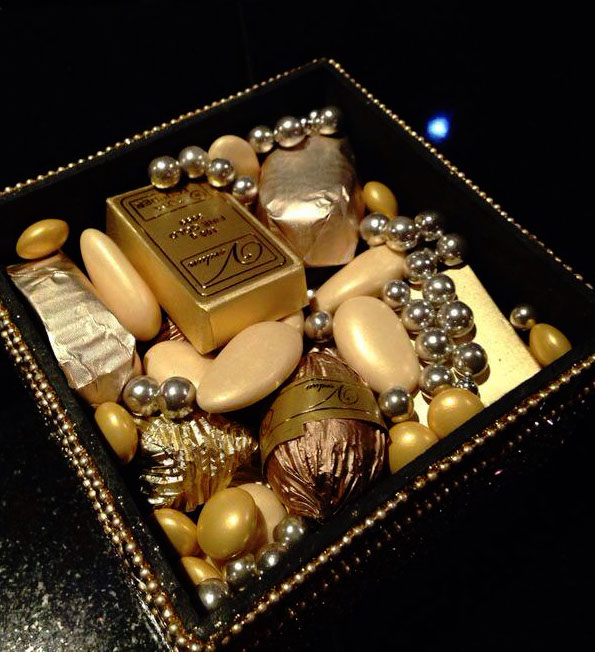Be a Genius Innovator
Many companies believe that the key to growth is innovation. So, if you work in innovation, how do you get really good at innovating? To be a genius innovator, it helps to understand how creative geniuses think.
Michael Michalko at The Creativity Post wrote an interesting article about how geniuses think and what we can learn from them. He refers to work by scholars who study creative geniuses throughout history - from scientists like Einstein to artists like Picasso, and highlights the different thinking styles they possess. When I saw this list of strategies, I realized that anyone can be a genius innovator. Just apply these same strategies to innovation, and you can be a genius innovator too. Here’s the list reimagined for innovators, as well as ways marketers can apply it to innovation.
1. INNOVATORS LOOK AT PROBLEMS IN MANY DIFFERENT WAYS.
Great innovators often look more holistically at innovation. Often times I’ve been brought into project that was created due to a specific technology that has been developed. I’m not saying this is the wrong way to start. But I do think it's not the best starting point for innovation because it doesn’t invite much creativity. Instead, start with the problems or desires that consumers have, and explore the many ways that their problems or desires can be addressed. Can you make purchasing your product easier? Can the actual product design be more user-friendly? Can you have a lower environmental impact? Can the product be more beautiful? This will yield many more options, perhaps stronger than the initial idea to exploit a specific technology. So look at problems in many different ways to invite potentially stronger innovation ideas.
2. INNOVATORS MAKE THEIR THOUGHTS VISIBLE.
I’ve learned over the years that the best way to innovate is to write stuff down and prototype. It’s great to have ideas, but if you can’t share them in a way that’s understandable to others, your ideas will never take flight. The first step to an innovation idea is usually a concept. It’s a written description of your product and what insight you hope to address for your consumer. For tips on creating your concepts, look here. It’s also a great idea to prototype. Create illustrations or working 3D models of your idea. This helps people conceptualize the idea. During an ideation session, it’s useful to bring in an illustrator to draw your ideas up. Innovators make their thoughts visible so ideas can eventually become a reality.
3. INNOVATORS PRODUCE.
Thomas Edison holds 1,093 patents and his sheer innovative genius is attributed to his massive productivity. When looking to create new ideas for your brand, holding a brainstorming session is a great idea. That’s because the more ideas you generate, the greater likelihood that you will uncover a gem of an idea or several gems. Quantity begets quality. That’s why its good for innovators to produce and produce some more.
4. INNOVATORS MAKE NOVEL COMBINATIONS.
Verdun chocolate is a mash-up of the chocolate and beauty categories.
When I think of innovative music, I think of mashups. I’m a big fan of Glee. Will Schuester uses mashups of disparate musical styles to get his singers' creative juices flowing. Classic Glee mashups include Bon Jovi and and Usher (Season 1) and Alanis Morissette and Carole King (Season 6). The same thing can apply to product innovation. What kinds of interesting ideas can you come up if you mash up your product with a different product? For example, what happens when you mash up a chocolate product with a beauty product? Answer: the chocolate brand Verdun. They apply beauty cues to decadent chocolate. Their chocolate comes in luxurious boxes that makes it look more like a beauty brand than a chocolate brand. It’s a chocolate and beauty mashup.
5. INNOVATORS THINK IN OPPOSITES.
New ideas sometimes come from thinking in complete opposites. These connections can be disruptive in a category just by virtue of being the opposite of what everyone thinks. In the wine category, everything looks pretty much the same. Wine comes in a bottle with a cork or a twist off cap. Wine is sophisticated and its glass bottles have an upscale feel. Beer cans by contrast is low-brow. Union Wine Company launched their Underwood Wine brand in a single-serve 12 oz. aluminum can - basically a beer can. It’s disruptive in the category because it’s the opposite of what you’d expect from a wine. For fun, check out Union Wine Company's funny way of expressing their 'low-brow' point of view. Sophia Blanc de Blancs also did the same by launching sparkling wine in a mini aluminum can similar to the ones you find in the energy drink category. More disruption for the category - just by thinking in opposites.
6. INNOVATORS THINK METAPHORICALLY.
Sometimes imagining what a product ‘could be like’ is a good way to develop new ideas. Think about what you could create if you imagined your product designed in a similar manner to another product. A great exercise to do in an innovation workshop is to have people think of different ideas based on random metaphors. What ideas would you come up with if your brand was like a rainbow? If you were coming up with beverage ideas, what would you design? I might come up with layered sodas with different colors. I might design the drink to emit a mist-like effervescent that comes out when you open it the bottle. What if it were like a high-speed train? What if it were like a banana? Metaphors are great starting points to coming up with innovation ideas.
So now when you are charged with coming up with that next million dollar idea, you know what to do. Just think like a creative genius and you are well on your way to becoming a innovation genius. You go this!


